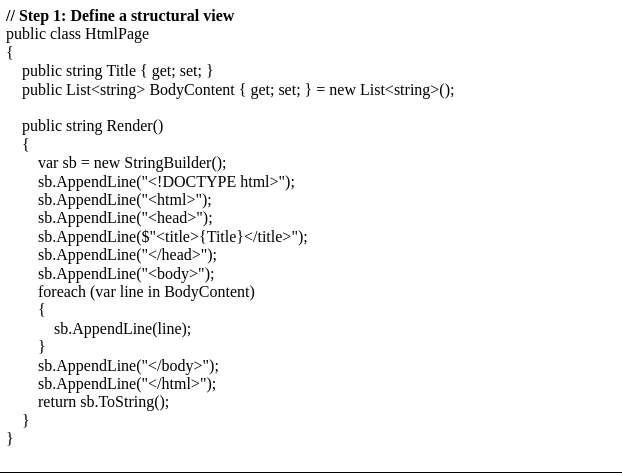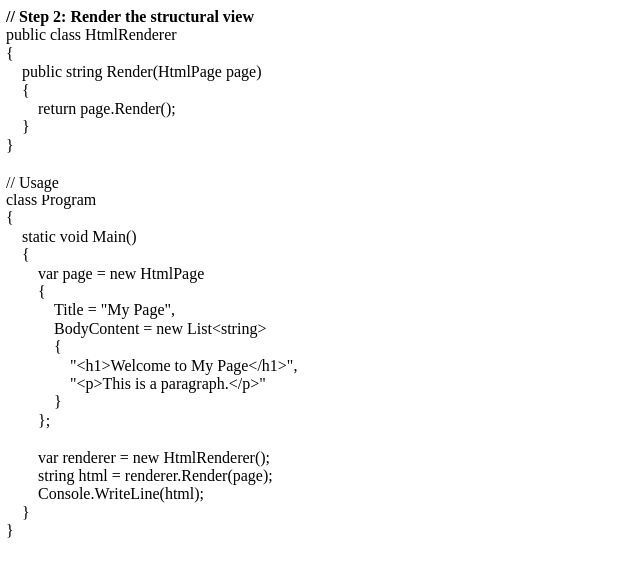In software development, the Two-Step View pattern is a design pattern that separates the construction of a view into two steps: the creation of a structural view and the rendering of that view. This pattern helps in decoupling the presentation logic from the actual rendering logic, making it easier to maintain and test.
Key Components:
- Structural View: This step involves creating a data structure that represents the view’s layout and content. This structural view is typically implemented as a simple object model or a data structure.
- Rendering: In this step, the structural view is rendered into a final output format, such as HTML, JSON, or a graphical user interface (GUI).
Example Implementation in C#:
Let’s consider a simple example of a Two-Step View pattern implementation in C# for rendering a basic HTML page.


Benefits of this Pattern are:
- Separation of Concerns: The structural view and rendering logic are separated, making the code easier to maintain and understand.
- Reusability: The structural view can be reused with different rendering implementations, such as rendering to HTML, JSON, or other formats.
- Testability: Each step can be tested independently, allowing for more focused and effective unit testing.
In conclusion, the Two-Step View pattern is a useful design pattern in C# for separating the construction and rendering of views, leading to more maintainable and testable code.




